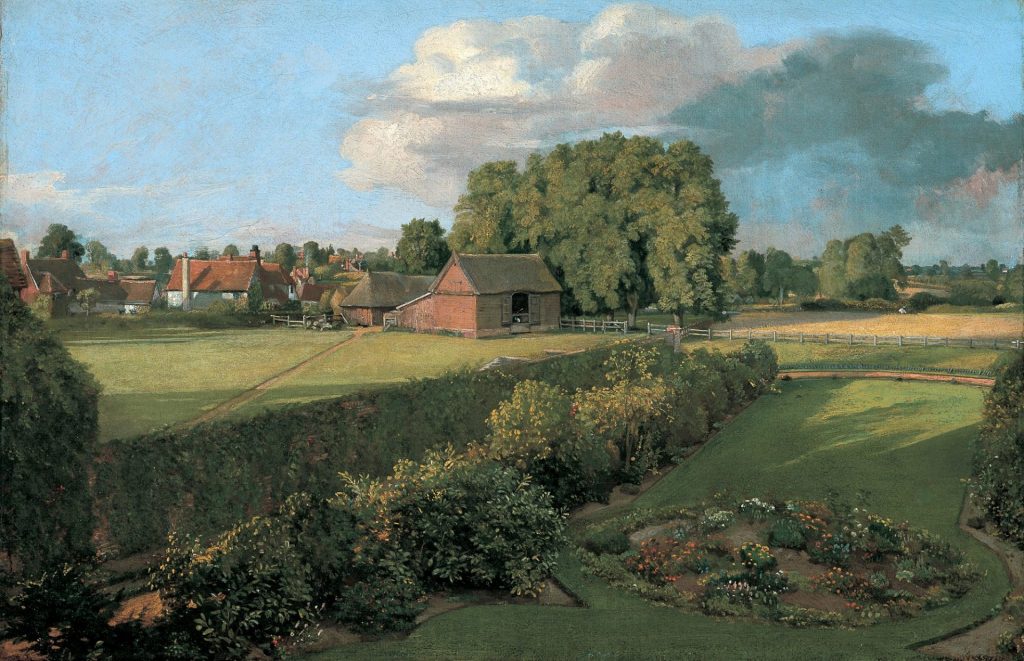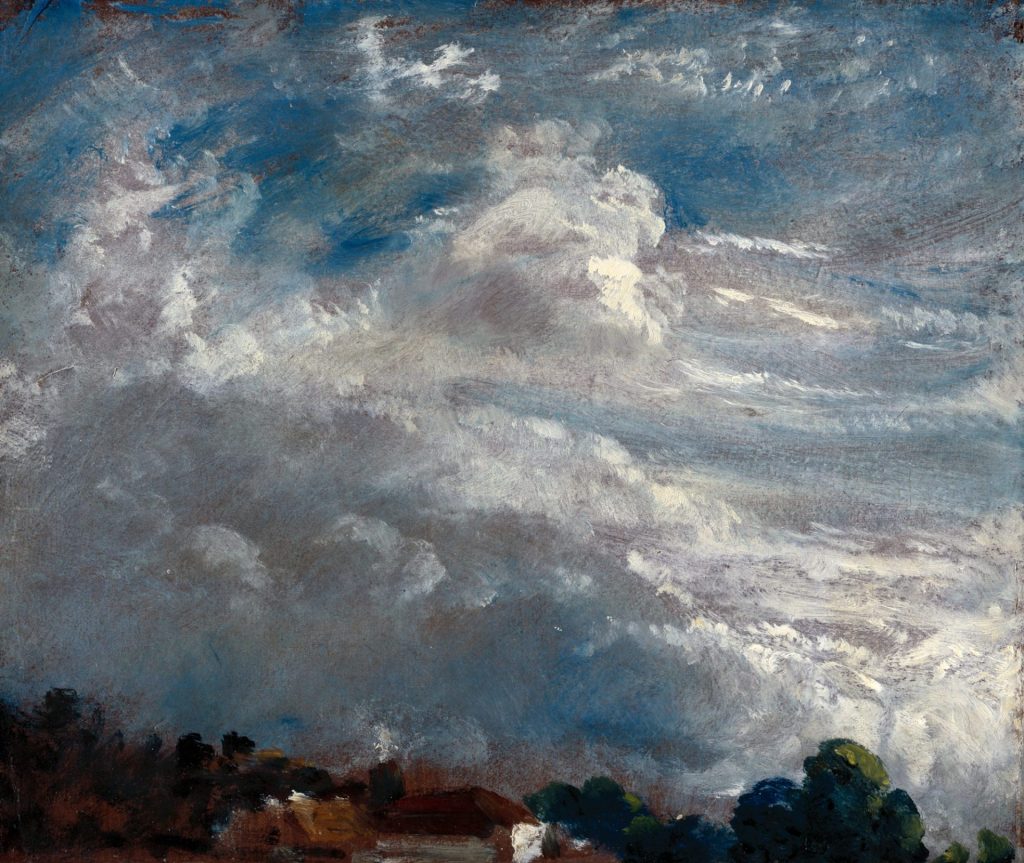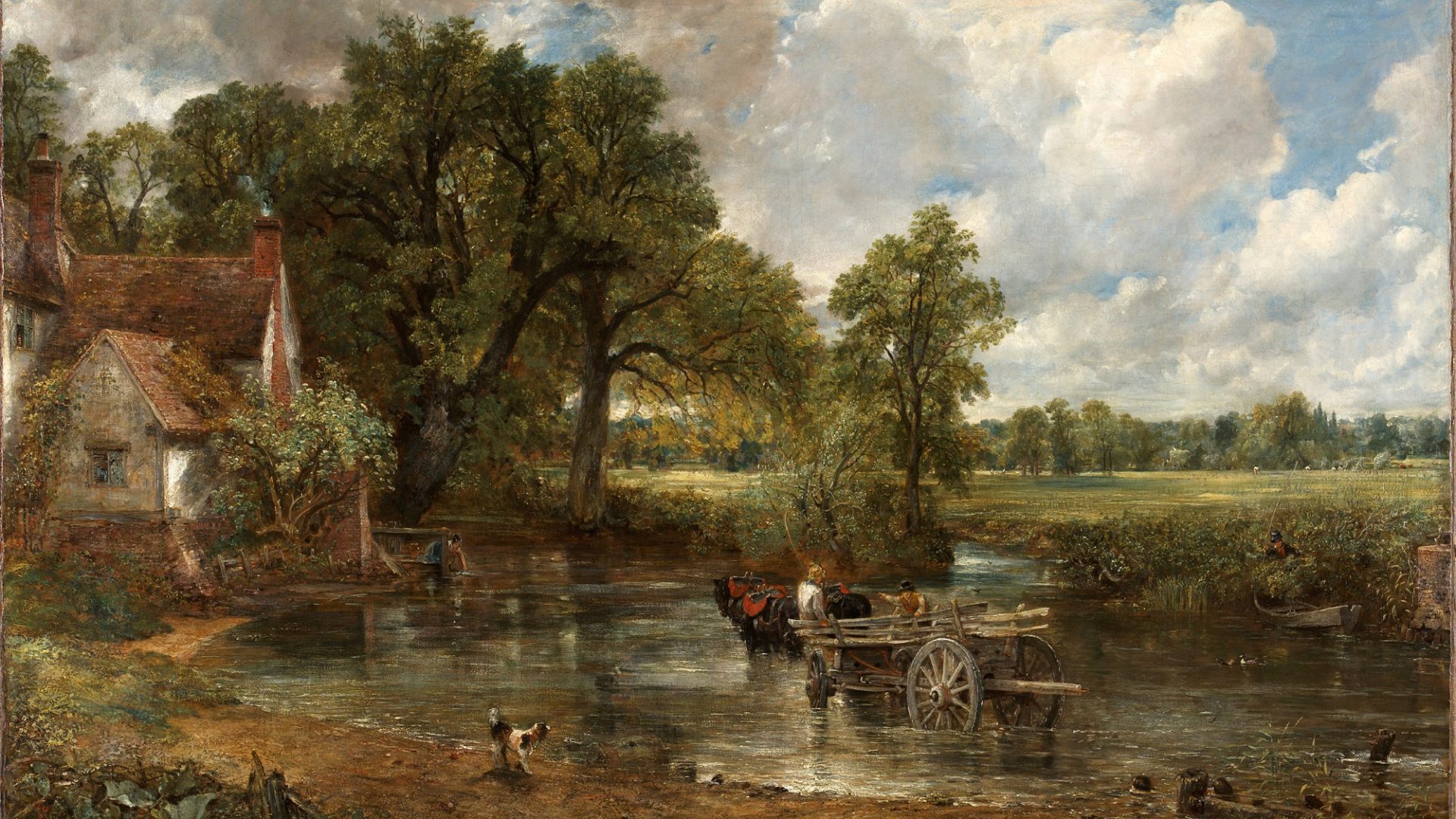John Constable had felt overlooked and undervalued for years. But in 1824, he sensed the tide – perhaps the tide in the Channel – was turning.
Having been rejected over and over again for membership of the Royal Academy in London, all-important at the time, the artist was being courted instead by a Parisian art dealer. It was to prove a pivotal moment for Constable, then in his late 40s.
John Arrowsmith, born in the suburb of Monceau but of English descent and a regular traveller to London, thought there were possibilities in the artist’s vast painting of a cart, marooned in a ford, at Flatford Mill in Suffolk. Constable’s lifelong friend John Fisher encouraged him to accept Arrowsmith’s offer: “The stupid English public, which has no judgement of its own, will begin to think there is something in you if the French make your works national property,” he wrote to his artist friend.
“You have long laid under a mistake. Men do not purchase pictures because they like them, but because others covet them. Hence they will only buy what they think no one else can possess: things scarce and unique.”
Turning down a derisory first bid, Constable finally let The Hay Wain go, along with View on the Stour near Dedham, for a total of £250 plus the promise that his art would be seen at the Louvre. Constable himself would not make the journey to Paris, extremely reluctant as he was to travel far beyond the fields of his childhood. He made an exception for London, where he knew he must rub shoulders with the rich and influential if his landscapes were to make their mark.
Now The Hay Wain – originally entitled Landscape: Noon – is the subject of an exhibition at the National Gallery that marks the 200th anniversary of both the painting’s Paris debut and the gallery’s foundation. The rural scene may seem tame to modern eyes, but the content and context of the picture speak volumes about the artist and his time.
It has become regarded as the epitome of English rural life, reverentially harnessed by propagandists on the one hand and endlessly parodied on the other. Painting and artist have become fused in the public mind.
Born in 1776, one year after fellow Englishman JMW Turner and two years after German romantic Caspar David Friedrich, two other artists fascinated by the power of landscape painting, Constable grew up in the prosperous family grain-milling business.
The vistas that he knew from boyhood were not romantic idylls but the workplaces of the men and women who stacked the hay, drove the cart or even built the barges in which cargo was floated along the River Stour. There are no fewer than 12 workers in The Hay Wain.
But Constable was no political radical, staying staunchly Conservative all his life despite the more liberal outlooks of his contemporaries, and he was capable of alarming and dismissive prejudice. “I am come to a determination to make no idle visits this summer or to give up my time to common place people,” he wrote to John Dunthorne, his friend since childhood.
Constable is a mass of contradictions, as James Hamilton’s comprehensive 2022 biography amply illustrates. On the one hand, he is set on an unfashionable sphere in art, landscape being considered in his time one of the lower genres, even though he is a perfectly competent portraitist, in which role he could have quickly made a decent living. On the other, he is a social snob who seeks out those with influence.
He marries for love, against the wishes of his young wife Maria’s wealthy grandfather, the Rev Dr Durand Rhudde, rector of his childhood parish church. But he spends long periods away from the mother of his seven children, who are holed up in Fitzrovia, London, or in Hampstead and Brighton, for the sake of Maria’s indifferent health. He makes little money but often rents two houses at the same time.
He reveres European art, particularly the works of Rubens, Titian, and, like his contemporary Turner, the French landscape painter Claude, but never sets foot outside Britain. On his deathbed, at his feet, was an engraving of Rubens’s Landscape by Moonlight. Rubens is associated so forcibly with figure painting of such overwhelming drama, but he painted landscapes for pleasure, rather than on a commission basis, among them A View of Het Steen in the Early Morning, depicting his own chateau near Mechelen.


Born in East Bergholt, Suffolk, one of six children raised in a substantial, newly built red-brick house, as the oldest boy John was expected to take on the milling business one day. But his undoubted artistic talent was encouraged in particular by his mother, Anne, who was ambitious for the boy, and who used all her contacts to smooth his way.
Notably, she befriended among her Suffolk neighbours the mother of the important patron and collector Sir George Beaumont, whose collection of European art made a huge impact on him. Among Beaumont’s possessions were Rubens’s Het Steen, Claude’s Landscape with Hagar and the Angel, which always travelled with him, and works by Rembrandt and Poussin, all of which Constable knew and admired.
Beaumont would encourage Constable, but was never to buy one of his paintings. The artist’s local friend, however, the older and talented all-round artisan Dunthorne, was of practical help. He was even called upon in the winter of 1820 to sketch “the outlines of a Scrave or harvest Wagon” and send it to Constable as he worked on The Hay Wain in the comfort of his London studio.
He shared with the young man a passion for and knowledge of the natural world, which underpinned all his greatest paintings. A chunk of tree trunk, weeds and dock leaves were among the studio detritus when, in the 1830s, William Powell Frith, not yet 20 but destined to make a speciality of Victorian crowd scenes, went to see Constable in his rooms in Charlotte Street, Fitzrovia.
“Never do anything without nature before you it if it is possible to have it,” Constable told Frith. “See those weeds and dock leaves. They are to come into the foreground of the picture. I know dock leaves pretty well, but I should not attempt to introduce them into a picture without having them before me.”
He was fascinated by clouds, and by their first classification by Luke Howard in 1802. The cloud studies are, to modern eyes, among his most attractive work.
This devotion to nature was born in an idyllic country childhood, plying between Flatford Mill, Dedham and East Bergholt on country lanes where his walks are retraced by the thousands of visitors today to “Constable Country”.
But although it is possible to stand where he stood, the scenes he depicted are not entirely there. Like any good artist, he edited what he saw, enlarged some features, and omitted others. And the natural world has done its own editing, sacrificing to disease, for example, many of the elms that tower so powerfully in Constable’s pictures.
The Hay Wain itself is something of a fantasy, not least because the wagon was based on a sketch by Dunthorne. Theories abound as to why a cart should be shown in the ford, which would be too deep to cross. It may be that the wheels were being “staunched”, water swelling the wood that would have shrunk in the heat, for a better fit with the metal rim.
What is certain is that this focal point, with its conversing men and patient horses, draws the eye, thanks in large part to a simple trick that Constable often employs: dabbing in a splash of blazing red. In The Hay Wain he gives the animals scarlet tack. In other works, it might be a worker’s hat, a neckerchief or waistcoat.
A decade later, his contemporary and rival JMW Turner enraged Constable by apparently copying this trick – itself learnt from the Old Masters – by dabbing some red into his seascape Helvoetsluys on varnishing day at the Royal Academy, when the two men’s pictures hung side by side. “He has been here and fired a gun,” protested Constable, upstaged, not for the first time, by the man of lowly birth who was made a Royal Academician fully 27 years before him.
It was Fisher who encouraged Constable to sell The Hay Wain to Arrowsmith in 1824, on the promise that it would be shown at the Louvre in Paris. The gamble paid off.
One year later, 27-year-old Eugène Delacroix visited London and pronounced Constable to be “une des gloires anglaises”. The author Stendahl agreed, writing, “We have never seen anything like these pictures before. It is their truthfulness that is so striking.”
The Hay Wain even got royal approval, being awarded a gold medal by Charles X of France. The Royal Academy finally caught up with these verdicts, making Constable a full Academician in 1829, when he was 52.
However much he believed in his mission as a landscape painter, Constable could not have imagined that one day The Hay Wain, now owned by the National Gallery, would hang near Beaumont’s precious Rubens landscape Het Steen. In his lifetime, the nascent National Gallery was not the Trafalgar Square palace of pictures that we know today, but was housed in Pall Mall. The current building opened in 1838; Constable had died the year before.
After changing hands several times, The Hay Wain was presented to the National Gallery in 1886. It has become one of the most recognised pictures by any British artist and a cherished symbol of England. Yet it owes much of its fame to Paris.
Discover Constable and The Hay Wain is at the National Gallery, October 17 to February 2, 2025; Constable: A Portrait by James Hamilton is published by Weidenfeld & Nicolson




